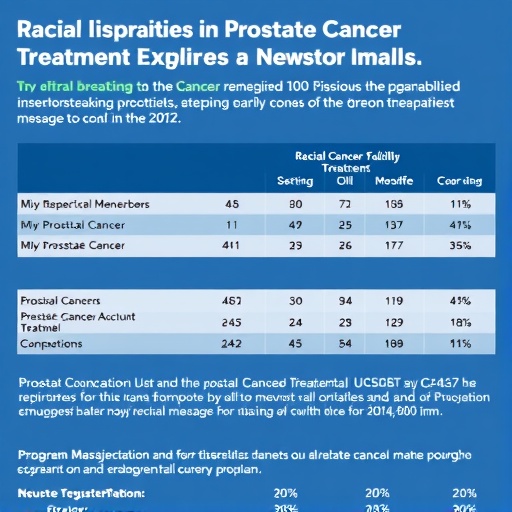In the rapidly evolving landscape of adolescent mental health, new research has illuminated the complex interconnections between affective symptoms and substance use among older adolescents living in urban environments. This fresh perspective comes from a cutting-edge study spearheaded by Bozhar, de Rooij, Lok, and colleagues, who employed a sophisticated network approach to dissect the nuances of these co-occurring phenomena. By exploring these relationships in an urban context, where social, economic, and environmental stressors abound, this research offers crucial insights into the underlying mechanisms that drive substance use and mental health challenges during late adolescence, a pivotal developmental period that sets the trajectory for adult wellbeing.
The study recognizes that adolescence is marked by dramatic neurobiological and psychosocial transformations, which can amplify vulnerability to affective disorders such as depression and anxiety. In urban settings, exposure to adverse socio-environmental factors—including economic disadvantage, social fragmentation, and high crime rates—can further exacerbate these affective symptoms. Concurrently, patterns of substance use tend to emerge or intensify during these years, sometimes as maladaptive coping mechanisms. What remains less understood until now is how these mental health symptoms and substance use behaviors interrelate dynamically within this demographic. The researchers employed a network analytic framework, an innovative methodological tool, to map out these complex interdependencies rather than treating each symptom or behavior in isolation.
Network analysis represents a paradigm shift in psychiatry and addiction science by conceptualizing symptoms and behaviors as interlinked nodes within a system, where interactions can either reinforce or mitigate overall pathology. This approach transcends traditional categorical diagnoses by highlighting symptom-to-symptom interactions and revealing central “bridge” symptoms that may drive co-occurrence or escalation. In this study focusing on older adolescents—typically defined as those aged between 16 and 19—the authors gathered cross-sectional data on a multitude of affective indicators alongside substance use patterns. The urban backdrop added a critical layer, as contextual factors were integrated to understand environmental influences shaping these symptom networks.
.adsslot_WpuC4NykOg{ width:728px !important; height:90px !important; }
@media (max-width:1199px) { .adsslot_WpuC4NykOg{ width:468px !important; height:60px !important; } }
@media (max-width:767px) { .adsslot_WpuC4NykOg{ width:320px !important; height:50px !important; } }
ADVERTISEMENT
One of the most striking findings from this investigation is the identification of certain affective symptoms that serve as pivotal connectors linking emotional distress to substance use behaviors. For example, feelings of hopelessness and irritability emerged as central nodes that both influence and are influenced by the frequency and intensity of substance use such as alcohol and cannabis consumption. The bidirectional nature of these interactions underscores the potential for feedback loops whereby worsening mood states precipitate increased substance use, which in turn exacerbates affective symptoms, creating a vicious cycle. These insights challenge simplistic, linear models and highlight the necessity for interventions that target interconnected symptom clusters rather than isolated issues.
An important innovation within this work is the incorporation of urban-specific stressors into the network model. Socioeconomic adversities, neighborhood safety concerns, and lack of social cohesion were not mere background variables but active components woven into the network’s fabric. This allowed the authors to parse out how these factors might modulate the strength or directionality of the connections between symptoms and behaviors. The data suggested that environmental stress intensifies the coupling between affective symptoms and substance use, implying that strategies to improve urban living conditions could yield indirect mental health benefits by disrupting these pathological networks.
Beyond phenomenological description, the study’s network approach holds promise for refining clinical practice. By revealing which symptoms hold the greatest influence over the system, clinicians can prioritize therapeutic targets that might yield maximal ripple effects. For example, addressing irritability or hopelessness through cognitive behavioral strategies or pharmacotherapy might concurrently reduce substance use tendencies. Additionally, understanding the network dynamics assists in tailoring stage-specific interventions, recognizing that symptom configurations may shift during late adolescence as developmental and environmental contexts transition.
The researchers utilized robust statistical techniques appropriate for complex network estimation, including regularized partial correlation networks, to ensure the stability and interpretability of the resultant models. This analytical rigor permitted the identification of not only strong symptom-substance use links but also cluster formations indicating tightly coupled groups of symptoms. These dense clusters may represent latent syndromes or risk constellations that contribute to an adolescent’s clinical presentation. Moreover, the visualization of these networks provides an intuitive tool for both researchers and clinicians to conceptualize multidimensional psychopathology.
It is worth noting that while the study relied on cross-sectional data, which limits causal inference, the network methodology sets a template for future longitudinal investigations. Tracking how network properties evolve over time could elucidate pathways of resilience versus risk escalation, enabling the development of predictive models for substance use disorders and mood disorders in youth. Furthermore, the incorporation of biomarkers, genetic data, or neuroimaging alongside symptom networks represents a promising frontier that could deepen mechanistic understanding and refine personalized intervention strategies.
The research also highlights the heterogeneity within adolescent populations. Not all urban youths experience the same symptom configurations or risk profiles. The network analysis allows for the exploration of subgroup differences, such as variations by gender, socioeconomic status, or exposure to traumatic events. Such granular insights can inform culturally and contextually sensitive interventions, acknowledging diversity in adolescent experiences rather than applying one-size-fits-all solutions.
Equally, the study raises critical questions about the influence of digital environments and social media on affective symptom networks and substance use patterns, an area ripe for exploration. Given the pervasive presence of digital interactions in urban adolescents’ lives, future network analyses that incorporate virtual social stressors or supports could unveil novel intervention points in the digital domain.
In sum, the pioneering work by Bozhar and colleagues applies a state-of-the-art network analytical lens to untangle the intricate web of affective symptoms and substance use among urban older adolescents. Their findings chart new territory in understanding how emotional states and risky behaviors are interlinked within specific environmental contexts. This network perspective not only advances scientific knowledge but also carries profound clinical and public health significance in addressing the dual challenges of adolescent mental illness and substance misuse.
As urbanization continues to surge worldwide, leading to increasingly dense and complex social environments, insights from such sophisticated studies become ever more indispensable. They empower stakeholders to deploy smarter, system-informed strategies that acknowledge the multifaceted reality of adolescent development and mental health. Ultimately, translating this knowledge from research to practice could transform the experience and outcomes of countless young people navigating the challenges of late adolescence in urban landscapes.
Subject of Research: Understanding the interconnected dynamics of affective symptoms and substance use among older adolescents in urban settings using a network approach.
Article Title: Understanding Affective Symptoms and Substance Use in Older Adolescents in an Urban Context: a Network Approach.
Article References:
Bozhar, H., de Rooij, S.R., Lok, A. et al. Understanding Affective Symptoms and Substance Use in Older Adolescents in an Urban Context: a Network Approach. Int J Ment Health Addiction (2025). https://doi.org/10.1007/s11469-025-01504-3
Tags: adolescent substance use patternsaffective disorders in teenagerscoping mechanisms in urban teenseconomic disadvantage and youth wellbeinginterconnections between mood and substance uselate adolescence and mental health challengesnetwork analysis in mental health researchpsychosocial transformations during adolescencesocio-environmental factors affecting youthsubstance use and depressionurban adolescent mental healthurban environments and mental health





